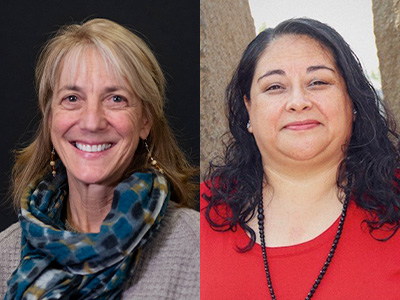
With funding from the EPA and in partnership with communities, DEOHS researchers will assess children’s cumulative exposures to agricultural stressors and evaluate solutions
MEDIA CONTACT: Deirdre Lockwood, DEOHS Public Information Editor: deirdrel@uw.edu
SEATTLE (January 8, 2024) — Children in farming communities face a variety of environmental hazards, including pesticides, diesel exhaust, airborne dust, wildfire smoke, groundwater pollution and socioeconomic stressors.

To clarify the cumulative impact of these stressors on children’s health and identify solutions, the UW is launching a new center with funding from the US Environmental Protection Agency. It is one of three centers funded by the agency’s new Center for Early Lifestage Vulnerabilities to Environmental Stressors effort.
The $1.9 million, four-year grant funds a center called Integrating and Informing Actionable Agricultural Community Tools (II-ACT), housed in the UW Department of Environmental & Occupational Health Sciences (DEOHS) in the School of Public Health.
In partnership with rural agricultural communities, particularly in Washington’s Yakima Valley, the center will combine cutting-edge biochemical analysis and environmental health mapping techniques to characterize children’s health impacts and identify actionable solutions to improve their health.
“This is a tremendous opportunity to identify and understand factors—both cumulative chemical and nonchemical stressors—that may impact children’s early development to identify ways to reduce such health impacts,” said DEOHS Professor Elaine Faustman, who leads the new center.
The center has three main areas of focus. First, Faustman and DEOHS Assistant Professor Judit Marsillach will leverage the emerging field of exposomics, which explores how chemical exposures and other stressors interact with our genetics to influence human health.

Working with existing cohorts of children in agricultural communities, Faustman and Marsillach will examine a set of biomarkers relevant to children’s environmental exposures in farming communities. They will use these biomarkers to identify early, preventable health impacts for these populations.
“Children are sensitive to the detrimental effects of environmental exposures, particularly in agricultural communities, which commonly face numerous chemical and nonchemical stressors. We are excited to help better characterize these exposures and generate predictive models to allow for early intervention and public health prevention,” said Marsillach.
Second, DEOHS Professor Edmund Seto and Clinical Assistant Professor Esther Min will integrate new national and Washington state maps defining cumulative environmental impacts on populations to inform efforts to improve children’s environmental health.
“We’re excited for this new opportunity to critically examine how both chemical and nonchemical environmental factors impact the health of children living in rural agricultural communities. What we learn through our research will improve cumulative impacts frameworks and lead to new tools to inform environmental justice solutions,” said Seto.

Finally, Dr. Catherine Karr, professor in DEOHS, Pediatrics and Epidemiology, and Elizabeth Torres, research coordinator in DEOHS and director of operations at the Northwest Communities Education Center, will lead efforts to foster partnerships with agricultural communities through bidirectional communication, projects to build environmental health awareness and community-engaged research and information sharing.
“We are delighted to continue a long-standing history of engagement with families and community-based organizational representatives to ensure research activities connect to community priorities and concerns,” Karr said.
In addition to better defining opportunities to improve children’s health in farming communities, the project will create publicly available models defining exposures for agricultural cohorts, as well as detailed mapping tools for cumulative environmental exposures.
“We look forward to developing and extending community partnerships that are necessary for these questions to be answered and for solutions to be collectively identified to reduce early health impacts,” Faustman said.